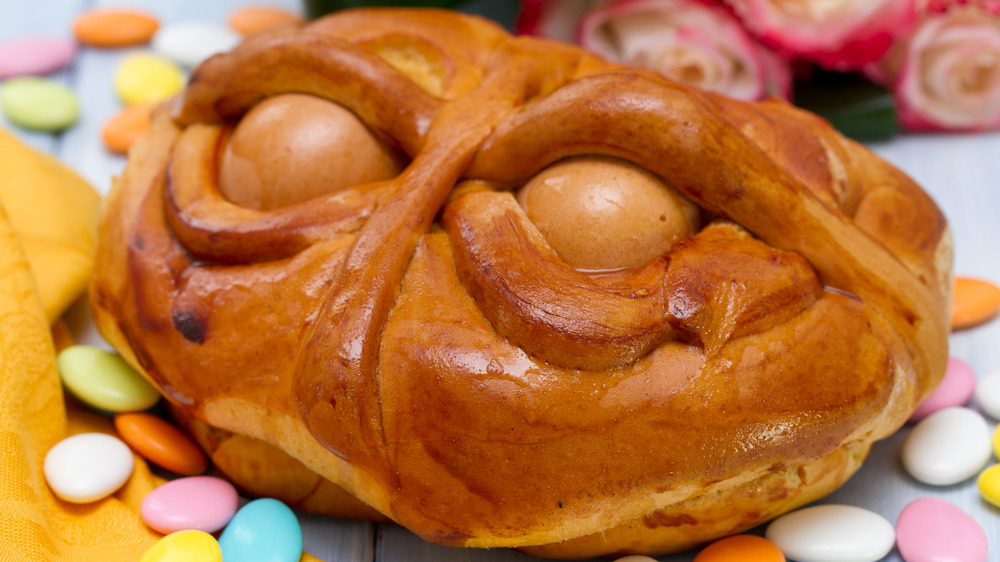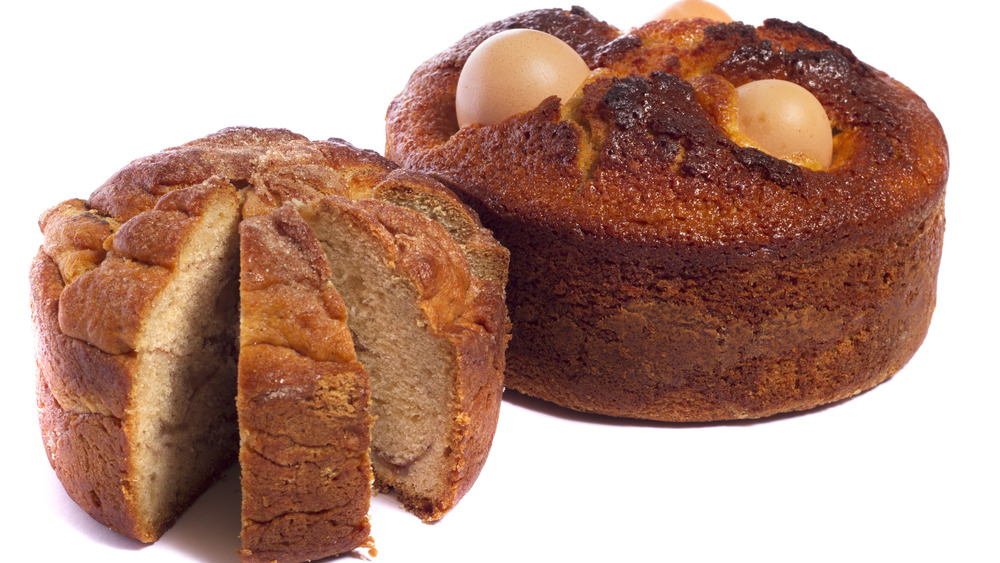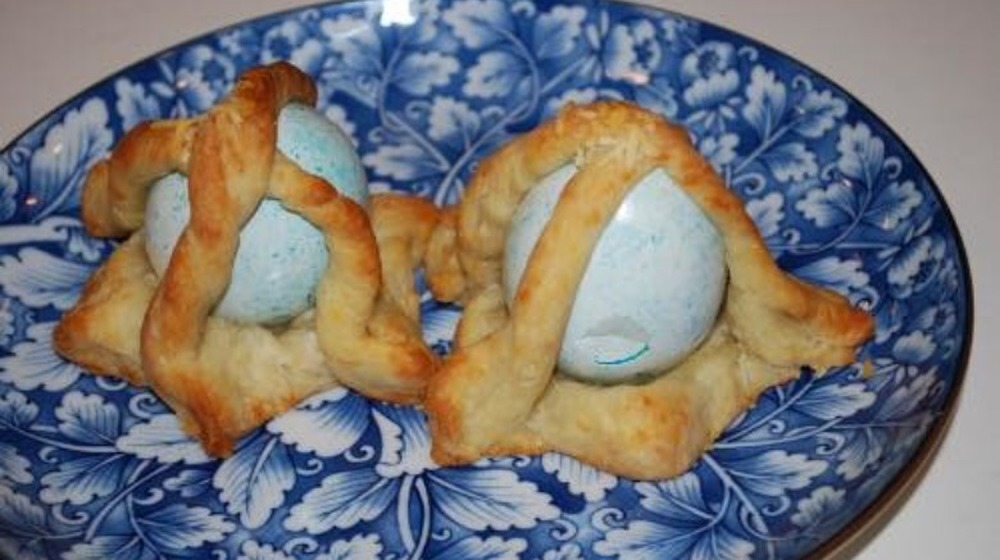What Are Folares And When Do You Eat Them?
At Easter time one thing you can be sure of, and that is the fact that egg-shaped foods will be popping up everywhere. Chocolate eggs, coconut eggs, peanut butter eggs, and even those amazing (and sadly, almost obsolete) panoramic eggs that are almost like Faberge masterpieces rendered in sugar (via Chicago Tribune). If you've ever shopped in a southern European grocery, or you yourself come from such a background, then you might also have seen a treat that involves actual eggs, whole ones still in their shells. These eggs, which may or may not be colored, are used to decorate several different types of sweet bread.
To Greeks, this egg bread is known as tsoureki and if you want to know how it's made, The Great British Baking Show's Paul Hollywood has a recipe on the PBS website. In Italy, a similar bread goes by the name pane di Pasqua (via Curious Cuisinière). Unlike the Greek version, where the eggs must all be dyed red, the Italian ones may come in pretty pastel colors, just like, well, Easter eggs. With Portuguese egg breads, which are called folares, the eggs may not be dyed at all.
There's not just one way to make folares
The eggs used in folares hold a symbolic value of birth and growth, as they do in the aforementioned breads, as well as in all of the other egg-shaped treats available in spring. The whole theme of rebirth is a pretty obvious one at this time of the year, as the earth itself emerges out from under its blanket of snow and ice (at least if you live in southern Europe or the more temperate parts of the U.S.). Within the Christian tradition, they are also meant to refer to the resurrection of Christ on Easter Sunday, and Portuguese/Italian/Greek tradition firmly holds to the idea of eggs as a symbol of the risen Lord.
While the symbolism is clear, there does appear to be a little discrepancy in just how many of these are used to make folares. While Just a Pinch says that seven eggs are traditional, GourmetPedia says there are four eggs arranged in the shape of a cross. The two recipes also differ in how the eggs are prepared — the first one uses raw eggs which bake as the bread bakes, as is done with Italian egg bread, while the second one uses hard-boiled eggs as is the case with tsoureki.
Folares aren't just for Easter, though
Interestingly enough, folares are actually a bi-holiday dish, one that spans two separate religious traditions. According to the Seattle Sephardic Network, folares are a typical Purim dish that originated with the Sephardic Jews. While many of us may be more familiar with hamantaschen, those sweet filled dough triangles meant to look like little hats (specifically, a three-cornered hat worn by Biblical baddie Haman), those pastries come from the Ashkenazic tradition. As My Jewish Learning explains, Ashkenazi Jews are those who can trace their roots to eastern or central Europe, whereas Sephardic Jews originated in southern Europe.
Folares for Purim may take the form of single-serve buns where one egg is wrapped in several strips of dough to create a sort of "cage." In this instance, the egg is not meant to symbolize rebirth or anything positive like that. Instead, it stands for Haman's head surrounded by the hangman's tower. Originally the Sephardic folares used un-dyed eggs, but in some communities (folares being traditional to all Sephardic communities, not just the Portuguese ones), the eggs are dyed in bright colors. It's likely that this practice was adopted from neighboring Christian communities (perhaps Greek or Italian ones) where colored egg breads are a thing, or maybe it just reflects the fact that dyeing eggs is fun and shouldn't be restricted to any one religion.


